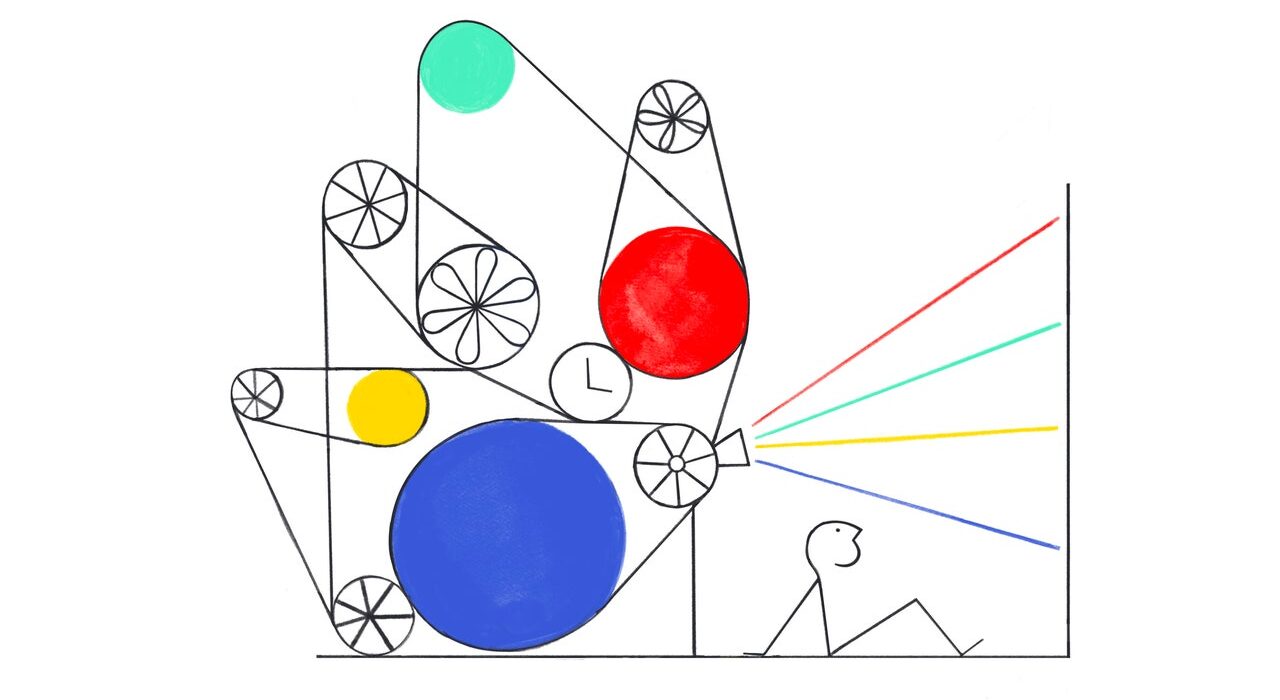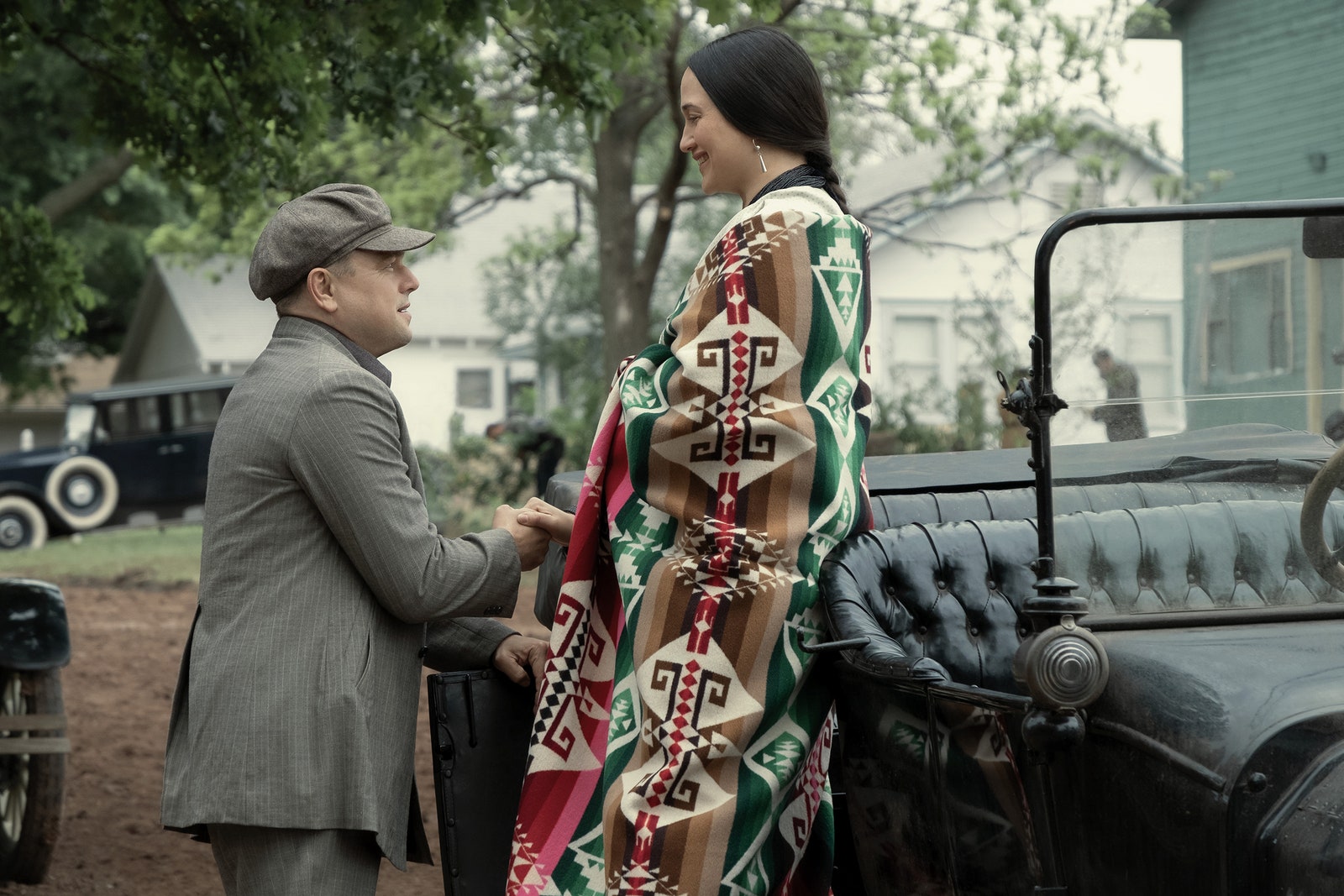The particularity of the current political moment can be seen if one compares the tag scene at the end of Scorsese’s “Killers of the Flower Moon” with the one at the end of a film he made a decade ago, “The Wolf of Wall Street.” In the earlier one, Scorsese implicates the world at large in the moral failings depicted in the film; in the new one, he implicates himself personally. Yet as the personal cinema moves—all to the good—from self-celebration to self-questioning, its tone changes. That may be a reason for the decline in D.I.Y. filmmaking. The sense (or the illusion) of working outside or without established systems doesn’t favor the display of a system’s workings. At such a moment, ingenuous artists risk seeming naïve—unless, like the now established generation of once independent filmmakers, they aim at a radical transformation of the world of movies and actually achieve it.
Photograph by Melinda Sue Gordon / Courtesy Apple TV+
Martin Scorsese’s vast adaptation of David Grann’s nonfiction investigation of the violent encroachment of white Americans on the oil wealth of the Osage Nation unpacks American history as a widespread criminal conspiracy and distills it into a drama of marital mysteries as disturbing and resonant as those of “Eyes Wide Shut.”
Wes Anderson’s exquisitely filigreed and ardently romantic view of a grieving family and a lonely actress at the science-fiction-adjacent setting of a young astronomers’ conference mines the weirdness of the nineteen-fifties—an enduring and still active complex of troubles and tropes hiding in plain sight in the era’s movies and in its political paranoia.
The irrepressible outpouring of giddy but principled inspiration in Greta Gerwig’s blockbuster—a vision of the earnest passions embodied in child’s play and the progressive power of girls’ uninhibited imagination—feels like the first display of her comprehensive artistry and like a new dimension in modern cinema.
Spanning half a century in the life of a woman in rural Mississippi, Raven Jackson’s first feature unites family lore and the legacy of history with a breathtaking romantic melodrama—and does so with a bold command of time and intensely sensitive image-making.
From the modest premise of a sculptor preparing her work for a show while also working at an art school, Kelly Reichardt explores the bonds and the conflicts of a tight-knit community, the burdens of family, and the inescapably fruitful frustrations of life’s impingement on art. The depths of an artist’s soul have rarely been filmed as finely.
Photograph courtesy MUBI
The American filmmaker Ira Sachs’s turbulent melodrama set in Paris—in which a German movie director married to a British man embarks on a reckless romance with a French woman—unleashes torrents of violently mixed emotions and yields a vertiginous, ecstatic sense of liberation.
There’s a feature film’s worth of style and experience crammed into the twenty-minute span of Dwayne LeBlanc’s first film, a classic tale of a young man’s return home (to South Central Los Angeles) conveyed with an audacious and original sense of form.
A. V. Rockwell’s first feature, spanning about two decades in the life of a mother and child in Harlem, fiercely depicts the ardor of family life and the fragility of family ties amid political pressures on the community, including oppressive policing, gentrification, and the trauma of incarceration.
Savanah Leaf’s début feature, the drama of a young woman’s fervent efforts to regain custody of her children and to maintain a bond with her newborn, offers some of the most expressive closeups in recent movies, along with a sharply detailed analysis of bureaucratic obstacles to the legal unity of families that Black women face.
For their first feature, the brothers Austin and Meredith Bragg dramatize an extraordinary byway of history: the longtime illegality of pinball in New York City and its legalization, in the mid-seventies, through the efforts of a journalist who loved the game. The film employs a daring narrative framework to present a bittersweet, vibrantly scrappy re-creation of the times.
Photograph courtesy Netflix
With this quartet of short films adapted from stories by Roald Dahl, Wes Anderson invents a new kind of cinematic storytelling—characters are both onscreen narrators and participants in the action—and portrays the cruelties of Dahl’s world as those of life at large.
For his forty-fourth documentary, the nonagenarian filmmaker Frederick Wiseman embeds with the chefs of a three-star French restaurant. Filming trenchantly and editing daringly, he uncovers the vast range of knowledge (scientific and culinary), experience (artisanal and administrative), and passion (artistic and personal) that energizes the enterprise—and finds the place of haute cuisine in the cultural pantheon.
The coming-of-age story of a teen-age girl in a small French city against the backdrop of her parents’ divorce gets both a melodramatic twist and a classical grandeur through Axelle Ropert’s poised and discerning direction.
14. “Ferrari”
Now in his eighties, Michael Mann makes his best film in decades with this grandly romantic yet death-haunted biographical story about Enzo Ferrari’s effort, in the fifties, to rescue his company by winning a major auto race.
The philosopher Paul B. Preciado’s first film, a docufictional and reflexive adaptation of Virginia Woolf’s historical fantasy “Orlando,” features more than twenty trans or gender-nonconforming actors in the title role. Integrating their personal reflections into Woolf’s story, the filmmaker pulls its drama into the present tense and even into a visionary future.
The prolific South Korean director Hong Sangsoo, working cheaply and spontaneously, delivers one of his most wide-ranging stories—of family conflicts and long-lost friends, the frustrations of filmmaking and the passion of art, the bewilderment of youth and the burden of age—in and around a single multistory building in Seoul.
17. “Origin”
To dramatize the real-life story of how the journalist Isabel Wilkerson wrote her nonfiction book “Caste,” the director Ava DuVernay boldly blends the contours of a bio-pic with documentary-based aspects of the author’s research.
Photograph courtesy A24
The life of Priscilla Presley, as overshadowed in adolescence by Elvis’s attention and in adulthood by his inattention, is presented by Sofia Coppola as a poignant synecdoche for the subordination of women in the culture at large.
19. “The Color Purple”
The director Blitz Bazawule, with his second feature, approaches the Broadway razzle-dazzle of the stage musical with stylish inspiration and gets hearty, exuberant, grounded performances from his superb cast.
Claire Simon’s documentary, set in the gynecology ward of a French hospital, explores a vast range of women’s-health and gender-related concerns, including abortion and gender confirmation, and looks closely at the invasive intricacies of medical technology—as well as the filmmaker’s own treatment there for a serious illness. ♦


